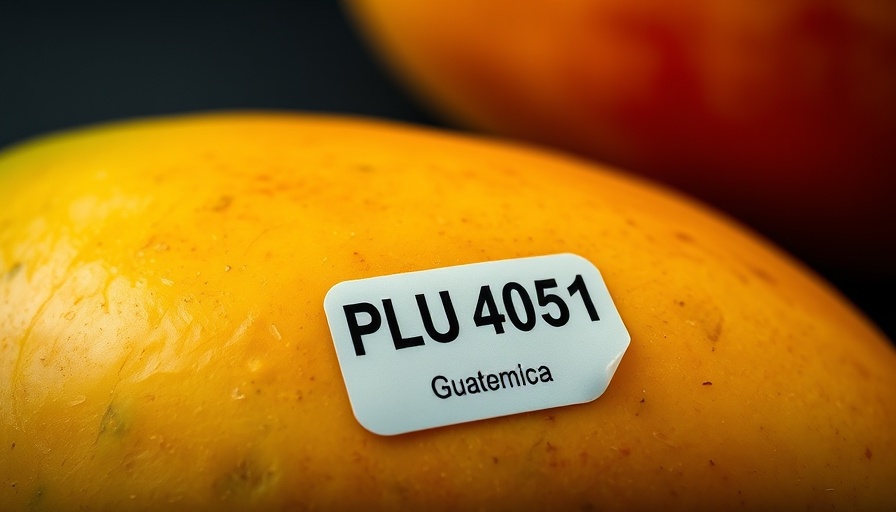
Unlocking the Importance of PLU Codes in Grocery Shopping
When grocery shopping, parents and wellness-aware individuals often overlook the small stickers known as PLU codes on their produce. These codes not only facilitate quick transactions at grocery stores but also carry hidden insights into the food we consume. Understanding PLU codes can empower shoppers to make informed decisions about their nutrition, encouraging healthier and more sustainable lifestyle choices.
What Exactly Are PLU Codes?
The term PLU stands for “Price Look Up” codes, designed to identify various fruits and vegetables quickly and efficiently. Established by the International Federation for Produce Standards (IFPS), there are over 1,400 unique codes assigned to different types of produce, ensuring consistency in grocery stores worldwide. Think of it as each fruit having its unique identity that helps streamline your shopping experience.
Decoding the Numbers: Reading PLU Codes
PLU codes can vary in length, being either four or five digits. A four-digit code typically indicates conventionally grown produce that may have been treated with synthetic fertilizers or pesticides. For example, if you see a PLU code of 4011 on a banana, it signifies that it was grown conventionally. Conversely, a five-digit code that starts with the number '9' signifies organic produce. Thus, if the banana has a code of 94011, you know it was grown using organic farming practices without synthetic chemicals.
Why Understanding PLU Codes Matters
Being able to decipher PLU codes can facilitate smarter shopping choices—especially for families concerned about the health implications of their food. While it's vital to note there’s insufficient scientific evidence claiming organic produce is nutritionally superior, families aiming to reduce their exposure to synthetic substances will find that products marked with five-digit PLU codes may better suit their needs.
The Future of PLU Codes and Consumer Choices
As the demand for various produce types blossoms, the IFPS plans to expand the PLU code range. This means future consumers will have even more codes assigned when the existing ranges exhaust. New codes will be assigned to conventionally grown produce within the 83000 to 83999 range and organic produce within the 84000 to 84999 range. Staying informed about these changes can help consumers continue to make mindful choices in their grocery stores.
Enhancing the Grocery Experience Through PLU Codes
Besides facilitating healthier choices, PLU codes enhance the efficiency of grocery shopping. These codes help cashiers quickly identify and ring up different types of produce, reducing the time spent at checkout and minimizing errors. This is particularly useful for parents who might be on a tight schedule trying to balance shopping with their daily responsibilities.
Common Misconceptions About PLU Codes
Despite the growing popularity of organic produce, there are several misconceptions regarding PLU codes. Many shoppers assume that organic always equates to being pesticide-free. However, even organic products may use naturally-derived pesticides. Recognizing this distinction is vital in making thoughtful health choices that align with family values regarding food sourcing.
Practical Tips for Using PLU Codes Effectively
1. Remember the numbers: Familiarize yourself with a few common PLU codes and which ones signify organic versus conventionally grown produce.
2. Use apps: Several smartphone applications can help you search for a PLU code, aiding in quicker decision-making while shopping.
3. Check local resources: Many community health organizations offer pamphlets or guides that explain more about produce codes available in local grocery stores.
Next time you’re in the produce aisle, don’t overlook those small stickers. By paying attention to PLU codes, you empower yourself and your family to make healthier food choices, aligning your grocery shopping with your wellness goals.
Considering the importance of understanding what goes into your body, incorporating mindful shopping practices can pave the way for a healthier lifestyle. Start by checking PLU codes on your next grocery trip, and share your findings with friends and family to build a more informed community.
 Add Row
Add Row  Add
Add 




 Add Row
Add Row  Add
Add 

Write A Comment